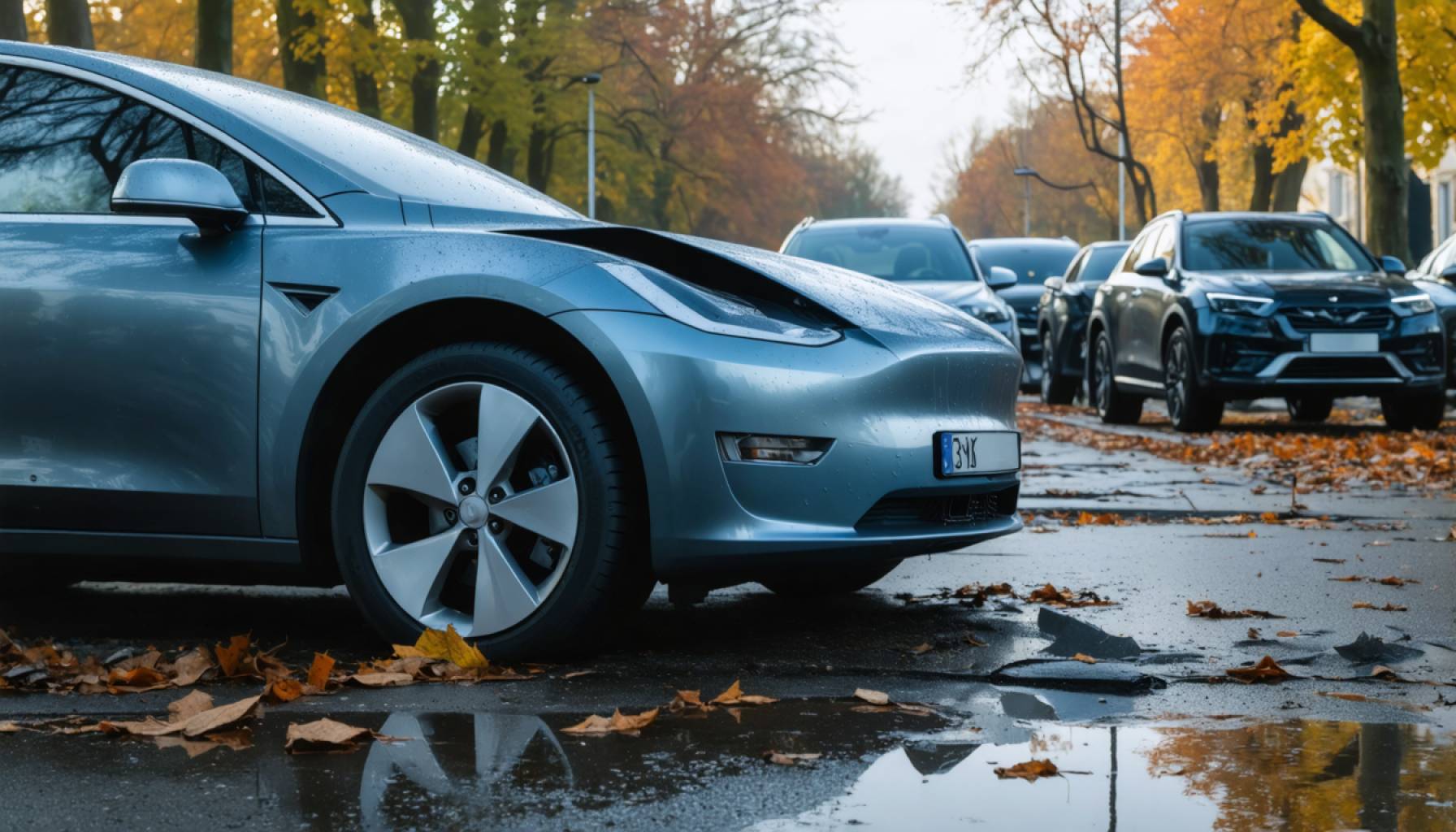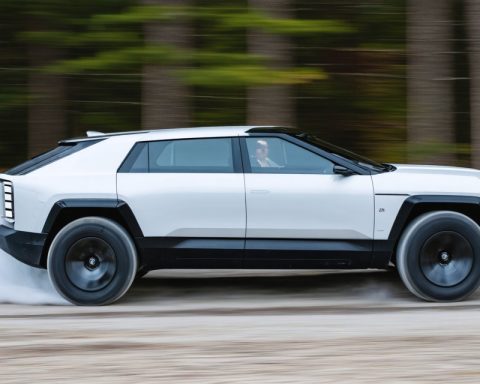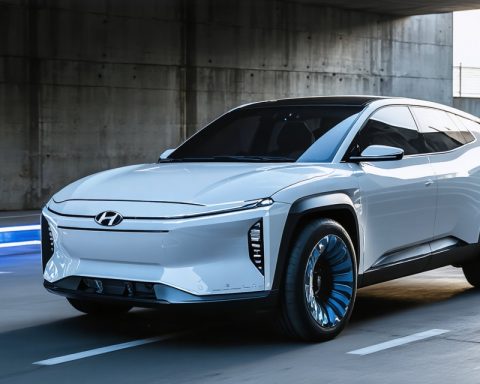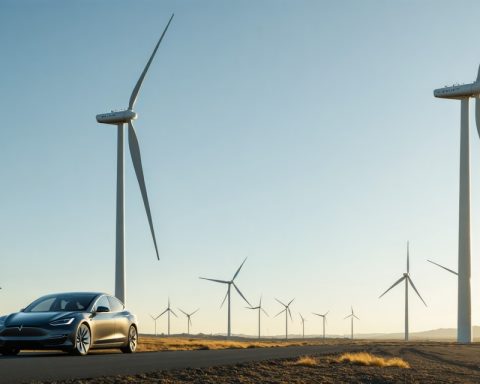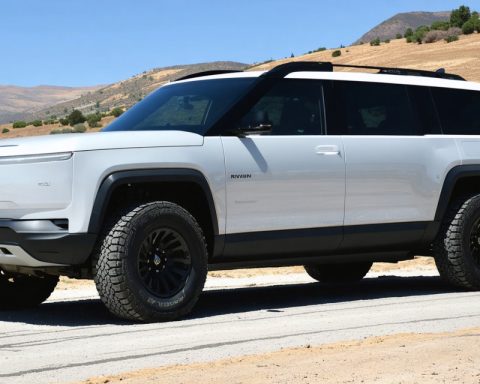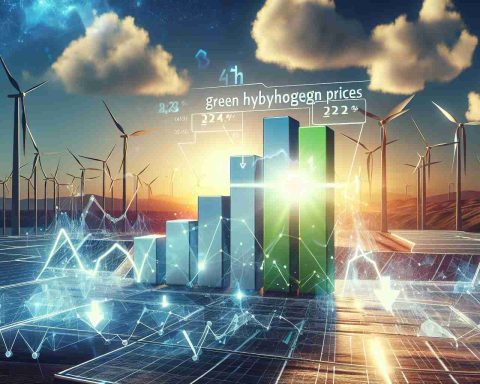- Electric vehicle (EV) charging stations are increasingly targeted by vandals, leading to severed cords and blocked access, posing significant challenges to EV adoption.
- The vandalism reflects a broader anti-EV sentiment and a society still deeply reliant on gas-powered vehicles, which constitute nearly 65% of new car sales in 2024.
- Misconceptions about EVs’ environmental impact persist, though studies show EVs significantly reduce emissions after 13,500 miles compared to gas vehicles.
- Vandalism is driven by both ideological resistance and opportunistic copper theft, further complicating the transition to a sustainable transportation future.
- Despite these challenges, growing awareness and protective measures are essential to overcoming obstacles and achieving long-term sustainability goals.
On a chilly morning in Glasgow, an electric vehicle (EV) owner arrived at a charging station, anticipating a routine charge. What greeted them was a scene of unexpected disarray—the charger’s cords lay severed, rendered useless. This act of vandalism was not an isolated incident but part of a perplexing trend unfolding globally, igniting questions about the shadowy motives behind such acts.
Across the Atlantic in Houston, a sobering pattern emerges: another charging station stands silent, its cords also cut. Meanwhile, in the tranquil setting of Incline Village, Nevada, a gas-fueled car blocks access, preventing any EV from recharging. It appears that both charging stations and EVs have become the targets of vandalism, from shattered windows to sides etched with keys.
Behind these acts lies a web of anti-EV sentiment. Despite the growing popularity of EVs, gas-powered vehicles continue to dominate the roads, representing nearly 65% of new car sales in 2024. EVs and hybrids still represent a smaller fraction, with about 19% of the market, underscoring a society still deeply rooted in combustion engine culture, according to Experian data.
Adding fuel to the fire are misconceptions surrounding EVs. While their production demands significant resources, largely for lithium-ion batteries, research by Reuters shows that EVs offset their environmental impacts significantly after traversing 13,500 miles. The Massachusetts Institute of Technology points out that gas vehicles emit approximately 350 grams of carbon pollution per mile, while EVs emit a more modest 200 grams.
However, the obstructions in transitioning to cleaner vehicles intensify with each vandalized charging station. The potential for vandalism, some suggest, isn’t purely ideological but also driven by opportunistic theft. The copper within the charging cables is a lucrative target, luring thieves to strip stations merely for scrap value.
In digital forums bustling with conversations, users voice dismay and confusion. Observers recount their own encounters, describing the futility of trying to charge an EV only to discover cables cut clean.
The implications are clear: vandalism of EV infrastructure not only disrupts individual drivers but jeopardizes broader environmental goals. The shift to electric is crucial for achieving long-term sustainability, but these mindless acts impede progress.
Amid the added intrusion of copper theft and societal resistance, the path to widespread EV adoption seems riddled with hurdles. Yet, as awareness grows and protective measures are enacted, the momentum towards a clean energy future remains unyielding, driven by the belief that such obstacles, though challenging, are not insurmountable.
Unveiling the Growing Threat to EV Charging Stations: Vandalism’s Impact on Clean Energy Goals
Rising Threat of Vandalism in EV Infrastructure
As the adoption of electric vehicles (EVs) continues to rise, so does the concerning trend of vandalism targeting EV charging stations. This wave of destruction not only damages valuable infrastructure but poses significant challenges to the broader environmental goals of promoting clean energy solutions.
Key Insights into the Vandalism Trend
1. Extent and Motivation:
– Recent incidents in Glasgow, Houston, and Nevada highlight a growing global trend of vandalism at EV charging stations.
– Motivations may range from anti-EV sentiment to opportunistic theft, with copper theft being a significant factor due to the high scrap value of the metal.
2. Impact on EV Adoption:
– EV ownership is on the rise, with 19% of new car sales in 2024 comprising EVs and hybrids (Experian data). However, gasoline vehicles still hold a dominant share at 65%.
– Vandalism creates additional hurdles in accessing charging infrastructure, potentially deterring prospective EV buyers.
3. Environmental Impact:
– Despite requiring substantial resources for battery production, EVs surpass gas vehicles in efficiency. Research indicates EVs offset their environmental costs after approximately 13,500 miles.
– Comparatively, EVs emit fewer pollutants, averaging 200 grams of carbon per mile versus 350 grams for combustion engines, per Massachusetts Institute of Technology findings.
How to Safeguard EV Infrastructure
1. Enhanced Security Measures:
– Installing surveillance cameras and better lighting around charging stations can deter potential vandals.
– Partnering with local law enforcement to increase patrols in vulnerable areas.
2. Public Awareness Campaigns:
– Raising awareness about the importance of EV infrastructure for community sustainability.
– Engaging communities in protecting public resources and advocating for clean energy transitions.
3. Innovative Charging Solutions:
– Development of tamper-resistant chargers and reinforced cables to deter theft and vandalism.
– Exploring portable charging solutions that are less vulnerable to tampering.
Market Forecast & Industry Trends
– EV Market Growth: As of 2024, EV market share is expected to grow, with incentives, decreasing battery costs, and regulatory pushes favoring cleaner vehicles.
– Infrastructure Expansion: Governments and private entities are expected to invest heavily in expanding and fortifying charging infrastructure to meet increasing EV demands.
Controversies & Limitations
– EV Production Footprint: Critics argue about the environmental impact of lithium-ion battery production, though these concerns are largely mitigated by EVs’ long-term emission reductions.
– Public Infrastructure Vulnerability: With growing reliance on public charging stations, infrastructure developers face the challenge of securing against vandalism effectively and economically.
Actionable Recommendations
– Support Local Initiatives: Engage with local government initiatives aimed at bolstering EV infrastructure and security measures.
– Promote EV-Friendly Policies: Advocate for policies that facilitate the expansion of secure EV charging networks.
Quick Tips for EV Owners
– Plan Your Routes: Before starting your journey, check the status of charging stations along your route for potential damages or disruptions.
– Stay Informed: Join local EV owner groups to share updates and gather insights on infrastructure developments and security issues.
For more information on EV trends and sustainable energy, you can explore insightful resources at Energy Information Administration and International Energy Agency.
By addressing these challenges head-on with collaborative and innovative solutions, the journey towards a cleaner energy future remains promising and achievable.
